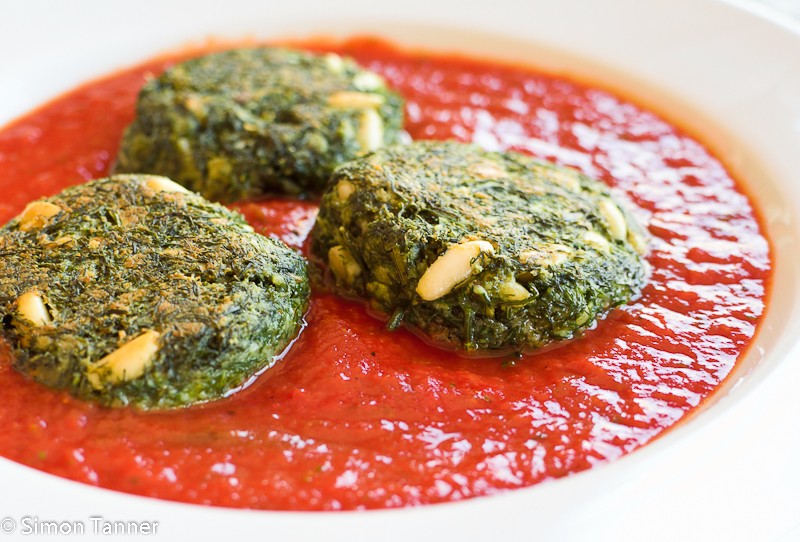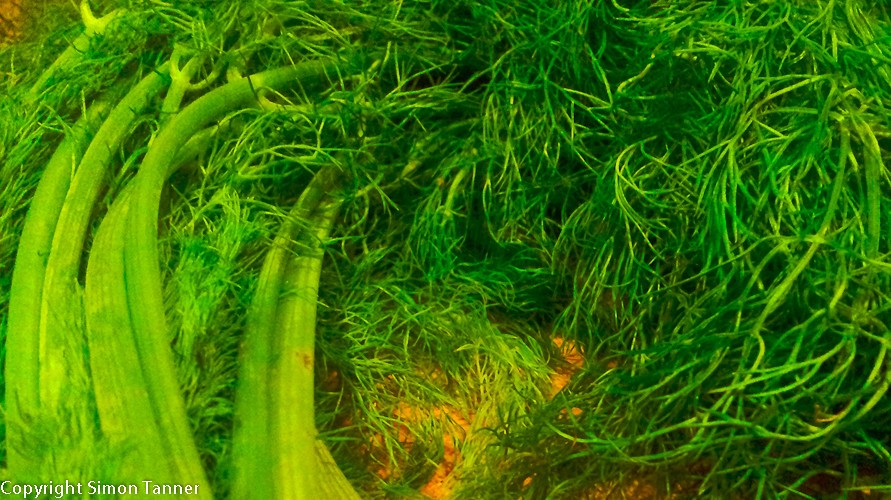 You may be forgiven for thinking I’ve turned pescetarian or something. Judging by recent posts, people may rightly be doubting my carnivorous credentials. If I didn’t get through so much bacon, sausages and rare steak I’d start to wonder myself.
You may be forgiven for thinking I’ve turned pescetarian or something. Judging by recent posts, people may rightly be doubting my carnivorous credentials. If I didn’t get through so much bacon, sausages and rare steak I’d start to wonder myself.
I think it must have something to do with the fact that on the whole, Sicilians (at least those living near the sea) don’t understand meat. This becomes abundantly clear whenever I go to the butcher’s and ask for a thick steak. He beams at me as if I were a long-lost prodigal son (the fact that I single-handedly cover his mortgage payments no doubt contributes to this bonhomie). As he lovingly cuts off a huge slab of beef, he also moans about the rest of his (less lucrative) clientele, who only want fettine. The fact that there is even a word for it – fettina, a diminutive slice – is indicative of local gastronomic culture. The only way to cook a fettina rare would be to expose it briefly to sunlight. Anything fiercer, like actually grilling or frying it using heat would result in shoe leather. In other words, if you like rare steak (is any other kind even worth eating?), then you’ll have to go to a restaurant specialising in meat (yes, there are a couple, run by brave revolutionaries), or cook it yourself.
And seeing as the Sicilians don’t understand meat, there are very few actual meat recipes. Even in the mountains, where the quality of produce is higher and the meat may be locally produced, it will usually just be grilled. Once you’ve taken out involtini – parcels of thin meat rolled around breadcrumbs and cheese, impaled on skewers and grilled – all that leaves you with is sausages and stew. And you get those everywhere. The sausages are very good, admittedly, especially if you like fennel seeds, and the stew is highly tasty. But the recipe for the latter is practically untouchable, and only envisages one variant (with or without the addition of tomato). And though the sausages are good, they’re all the same. Even England, which is the culinary pariah of Europe, can offer more local variation in flavours and the types of meat used to make them.
Not possible, I hear you say. Surely they make casseroles with beef braised in wine? Not in Sicily. Meat stewed with root vegetables or mushrooms? No. Meat and potato combinations similar to shepherd’s pie or Lancashire hotpot? Not bloody likely. Pies, perhaps? God forbid. Even roast meat is a rare occurrence here. The poor old chicken is treated with particular contempt: they don’t even serve it with pasta. And Sicilians will eat almost anything with pasta (squid ink, sea urchins, snails…). Are you beginning to see a pattern here?
Some smart-arse will now come up and tap me on the shoulder to tell me that there are recipes for roast kid with artichokes for example, sugo di maiale or Palermo’s falsomagro (a kind of meat loaf). Yes, OK, there are exceptions, but they are few and tend to be rolled out for special occasions, such as Easter (for some people, this may be the only day of the year they eat lamb or kid). And again, these recipes mostly hark from the mountains. In the rest of the island, and for the rest of the time, it’s a fettina of chicken breast, a fettina of veal, or a fettina of steak, and if they’re feeling adventurous, involtini or a breaded cutlet. With the occasional pork chop, sausage or charcoal-grilled intestine for the local Hell’s Angels.
So this is why most of my posts are based on fish, vegetables and pasta. Simply because that’s what they do best in this part of Sicily. It’s also the field in which they’re most creative, and actually have recipes with a combination of ingredients, rather than a “just slap it on the grill and watch it shrivel” approach.
Anyway, I do have a meat recipe lined up for next time, honest, but we’ll be getting there via vegetables, albeit in a form – polpette – that brings meat to mind: I am weaning you back on to carnivorous fare slowly, so as not to shock the system.
 The Italians love their polpette, whether meatballs, fishballs or those based on vegetables. Today’s version, from wild fennel, is one of the more unusual incarnations, and you’re not likely to find it on menus outside western Sicily, where they are big wild fennel fans. In an iconic dish from Palermo, paste con le sarde, it joins forces with sardines, pine nuts and raisins to create one of the few fish-based pasta dishes I find palatable.
The Italians love their polpette, whether meatballs, fishballs or those based on vegetables. Today’s version, from wild fennel, is one of the more unusual incarnations, and you’re not likely to find it on menus outside western Sicily, where they are big wild fennel fans. In an iconic dish from Palermo, paste con le sarde, it joins forces with sardines, pine nuts and raisins to create one of the few fish-based pasta dishes I find palatable.
If you like the aniseedy flavour of wild fennel, you will love these. This is the fennel equivalent of a caffè ristretto, the concentrated essence of fennelness. The tomato sauce to accompany them is optional, but adds an extra level of flavour as well as attractive colour contrast. So here we go…
For 4:
For the polpette:
- 1250g wild fennel, uncleaned weight (will yield about 650g once cleaned and boiled)
- 80g pine nuts
- 3 eggs
- 100g grated parmesan
- 100g breadcrumbs
- Sea salt and freshly ground black pepper
- Olive oil for frying
To accompany:
- 700g good tomato sauce, either homemade from a large jar of passata or bought in.
- Rinse the wild fennel and shake dry. Then strip off the fine fronds, discarding the thick stalks, which remain tough unless you cook them for hours. To do this, just grip a stalk of the plant with one hand at the base between thumb and forefinger and pull it through with the other hand. Much as you might do when stripping the needles off a sprig of rosemary.
- Cook the leaves in salted boiling water until tender (20-30 minutes). Drain well and then squeeze out any excess liquid. Chop finely (a mezzaluna is perfect for this).
- Mix the fennel with the pine nuts, eggs, parmesan and breadcrumbs, and season well.
- Form into balls the size of large walnuts, and then press lightly to produce mini-hamburger size rissoles.
- Fry the rissoles in a little olive oil over a medium heat, until lightly browned and cooked through (10-15 minutes). While they are cooking, heat the tomato sauce.
- Serve with hot tomato sauce

 English
English
What are the main ingredients used in polpette di finocchietto selvatico (wild fennel rissoles)?
thanks